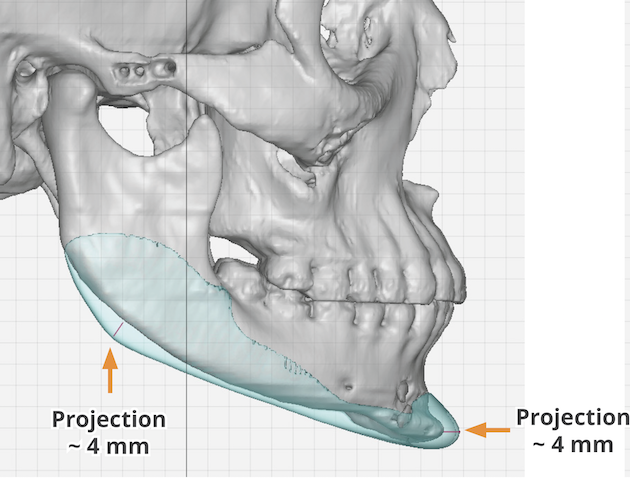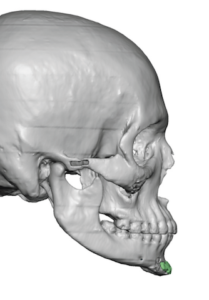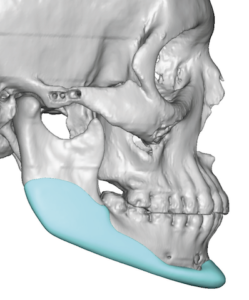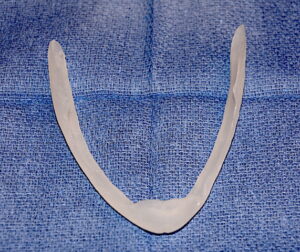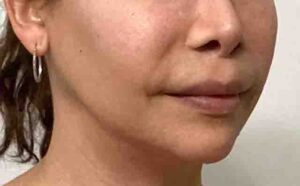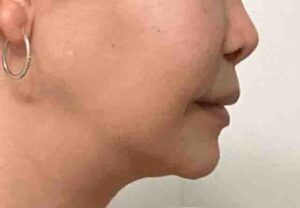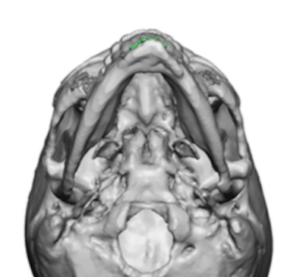Background: V line surgery is a now well known lower jaw reshaping procedure to help slim the lower face. In its original and still most commonly used technique, a vertical amputation (oblique ostectomy) of the lower jaw is done from the jaw angles forward to the anterior body of the mandible. This is then combined with t-shaped chin osteotomies that almost always have a narrowing effect combined with various horizontal and vertical dimensional changes.
While V line surgery can be very effective at making the lower face slimmer and more shapely, it can have adverse aesthetic effects. This can include soft tissue sagging from loss of bone support, over resection of bone that creates too dramatic of a change and inability to adapt to the new facial appearance even if others see it as an acceptance outcome.
In any form of reversal of V line surgery it is mainly about lower jawbone restoration. In most cases there is really no way to reliably do so other than a custom implant design. Re-expanding most of the jawbone contours that have been removed, doing it in a symmetric and bilateral fashion and achieving the type of change the patient desires (subtotal vs total reversal) requires a computer design approach.
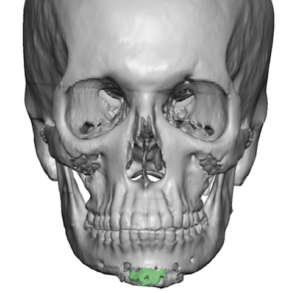
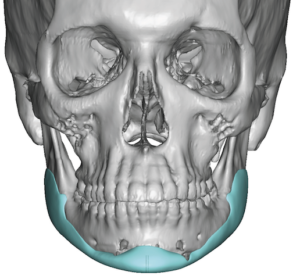
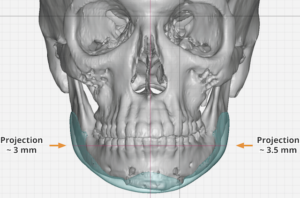
Under general anesthesia and through an external small submental incision combined with posterior intraoral cheek incisions, the jawline implant was placed in a front to back technique as a single piece intact implant.
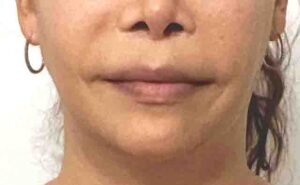
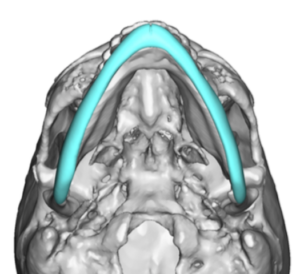
Case Highlights:
1) V line surgery runs the risk of either being overdone, poor patient selection or patient’s unacceptance of their new facial appearance.
2) Because much of V line surgery involves bone removal, partial or complete jawline restoration requires a custom implant approach.
3) The design of a custom jawline implant after V line surgery is aided by preoperative x-rays of the original bone shape although this is not always available.
Dr. Barry Eppley
Indianapolis, Indiana

